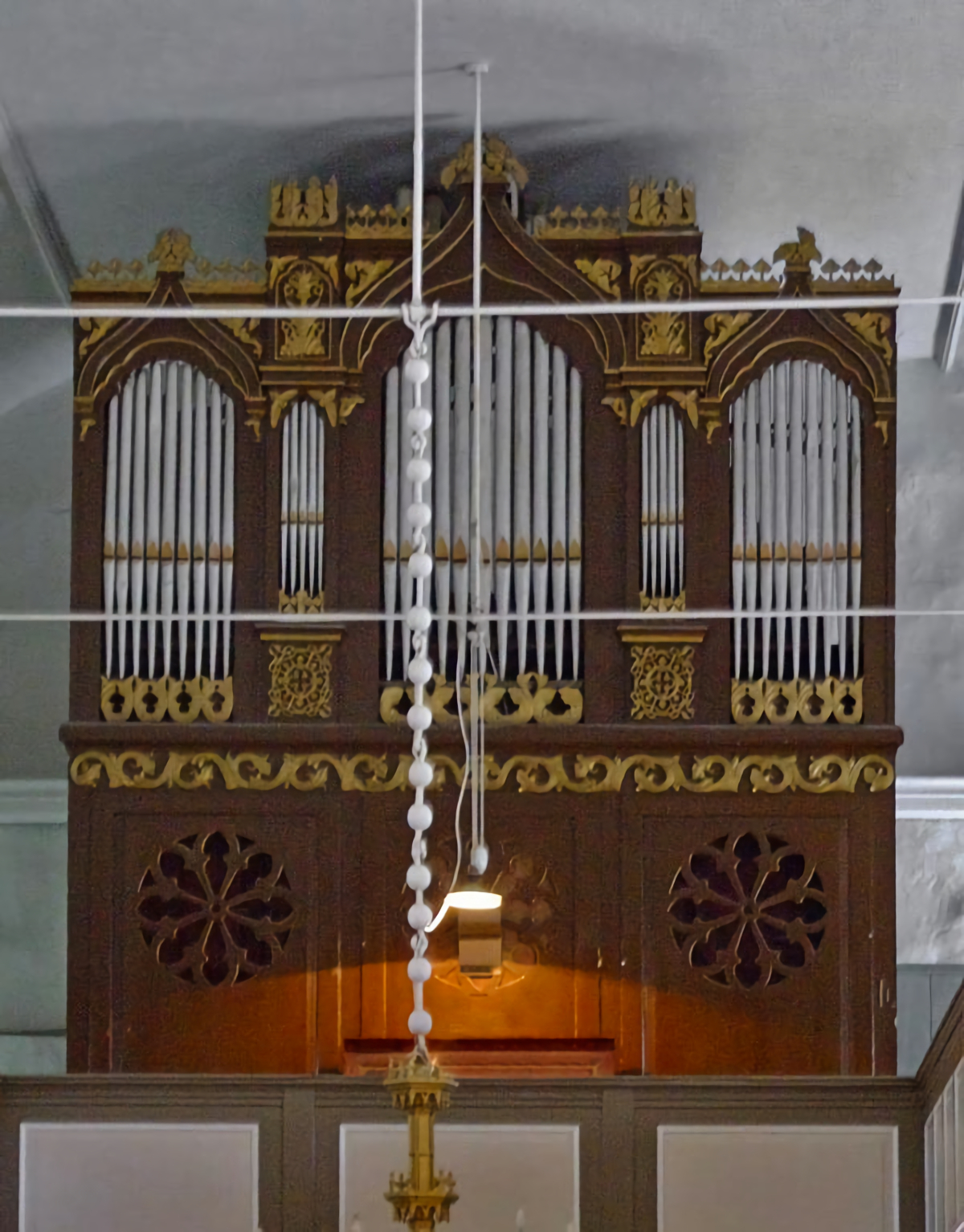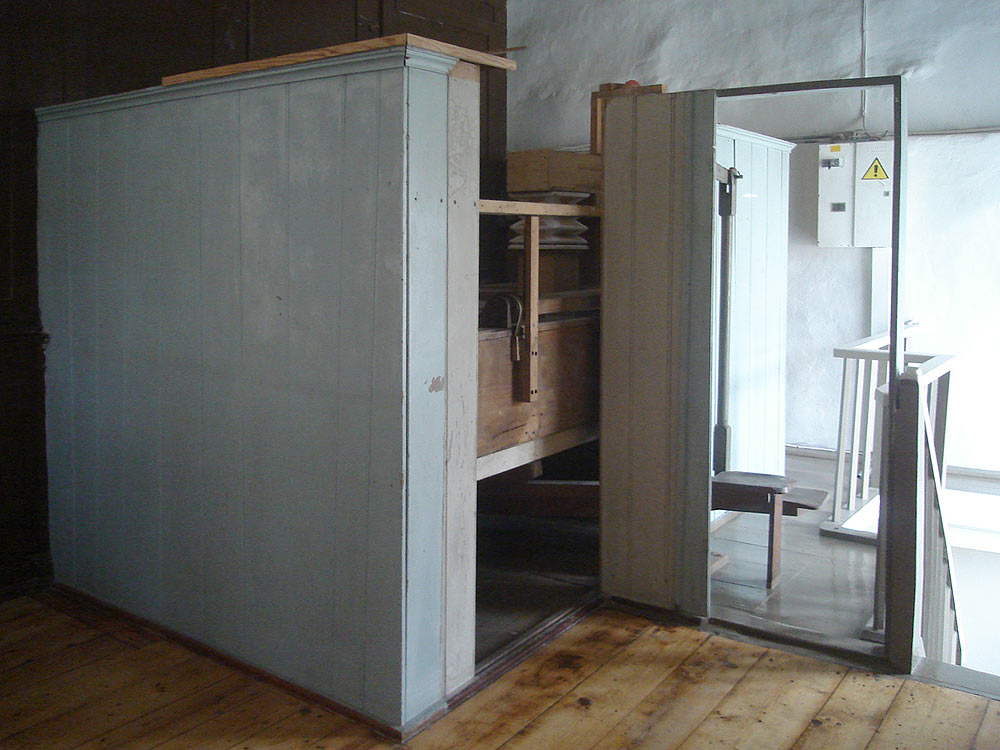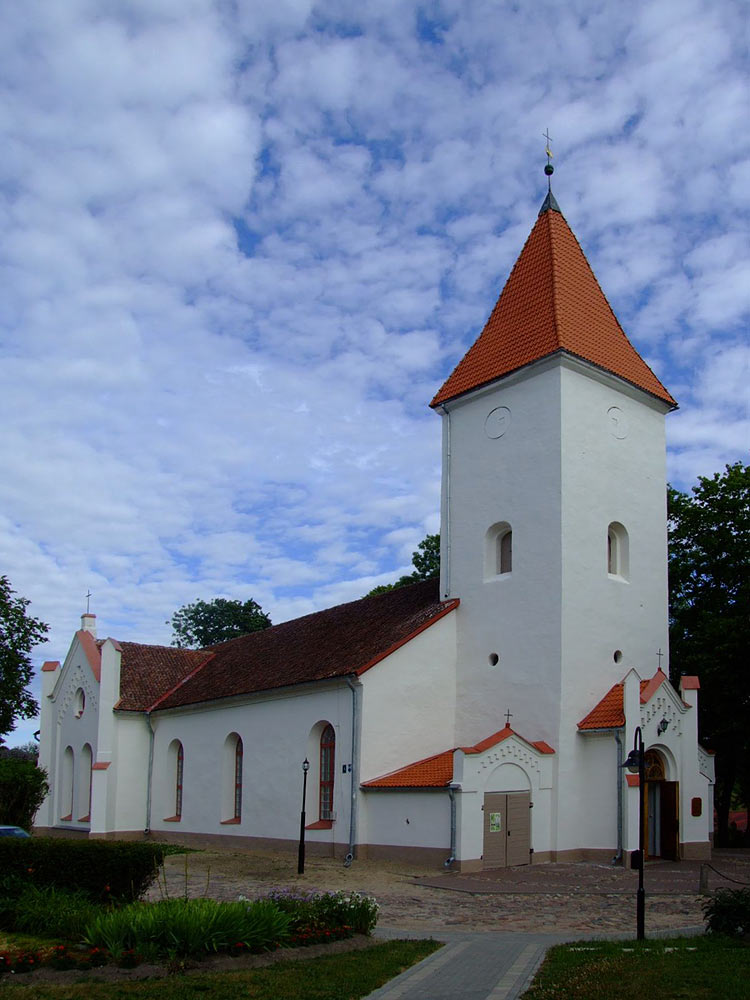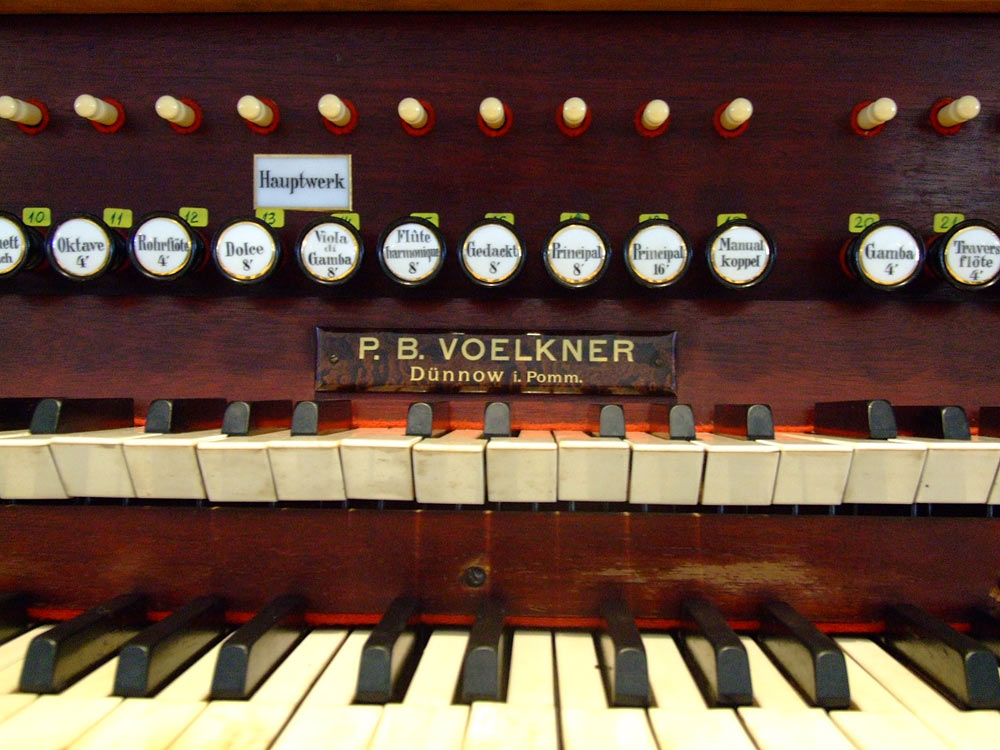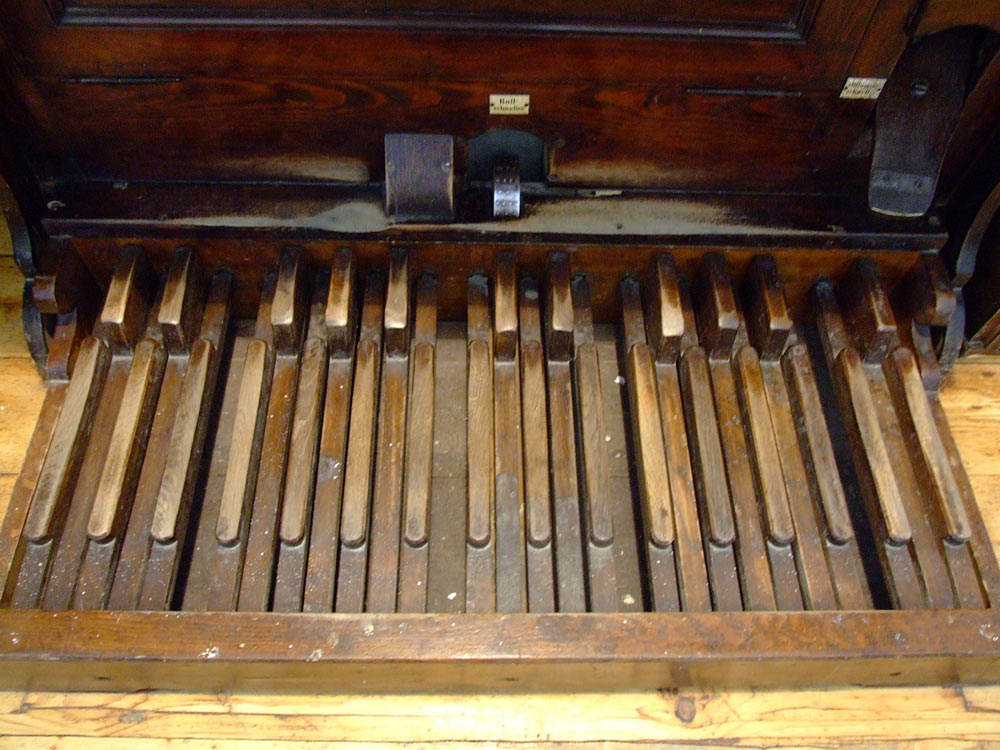Talsi, Talsu Evaņģēliski luteriskā baznīca
| Builder | P. Voelkner |
|---|---|
| Year | 1904 |
| Period/Style | Romantic |
| Stops | 26 |
| Keyboards | 2+P |
| Keyaction | pneumatic |
| Tuning | Equal at 433 Hz |
The existing organ at the Talsi Lutheran Church was built in 1904 by P.B. Voelkner from Dünnow, Pomerania. There is no information about the previous instrument, but the current organ was integrated into the previous organ's case. An inscription indicates that the organ was renovated on September 7 by I.F.? Martin and W. Henke, though the year is not specified. Another inscription notes that the organ was cleaned and tuned in April 1940 by A. Krāns and A. Černovskis from A. Krāns' organ building company.
According to church records, the organ was also repaired in 1955, but details of the work are not specified. In 1980, organist P. Sīpolnieks recorded an album in the "Latvian Organs" series. In 1996, T. Deksnis installed an organ motor, providing air through a folded channel. In 2005, the instrument was restored by A. Melbārdis and J. Kalniņš' organ building workshops: pneumatic action parts under the wind chests were renewed, pipes were repaired, a new folded channel from the motor to the bellows was made, and the instrument was cleaned, intonated, and tuned.
The organ, in a Romantic style, has two manuals and remains in almost original condition, housed in a case preserved from the previous instrument. However, the pneumatic action does not function as well as the best analogs.
According to church records, the organ was also repaired in 1955, but details of the work are not specified. In 1980, organist P. Sīpolnieks recorded an album in the "Latvian Organs" series. In 1996, T. Deksnis installed an organ motor, providing air through a folded channel. In 2005, the instrument was restored by A. Melbārdis and J. Kalniņš' organ building workshops: pneumatic action parts under the wind chests were renewed, pipes were repaired, a new folded channel from the motor to the bellows was made, and the instrument was cleaned, intonated, and tuned.
The organ, in a Romantic style, has two manuals and remains in almost original condition, housed in a case preserved from the previous instrument. However, the pneumatic action does not function as well as the best analogs.
| Hauptwerk | Oberwerk | Pedal |
|---|---|---|
| Principal 16 ´ | Bordun 16´ | Violonbass 16´ |
| Principal 8´ | Geigenprincipal 8´ | Subbass 16´ |
| Gedackt 8´ | Schalmey 8´ | Oktavbass 8´ |
| Flute harmonique 8´ | Salicional 8´ | Violoncello 8´ |
| Viola di Gamba 8´ | Voix céleste 8´ | Posaune 16´ |
| Dolce 8´ | Aeoline 8´ | |
| Rohrflöte 4´ | Concert flöte 8´ | |
| Oktave 4´ | Liebl. Gedackt 8´ | |
| Cornett 3 fach | Travers flöte 4´ | |
| Mixtur 5 fach | Gamba 4´ | |
| Trompete 8´ |
ImanCornetOctave4Gedackt8 IImanGamba4Flauta4LieblGed8 PedSubbassOctavbass E
0:00
0:00
ImanIImanStiiguPlenum Geigenprincipal rk E
0:00
0:00
ImanIImanFlautuPlenums8 4 rk E
0:00
0:00
8Plenum manKoppel Ped16 E
0:00
0:00
Tutti E
0:00
0:00
Forte gk E
0:00
0:00
MezzoForte gk
0:00
0:00
https://orgcat.lv/talsi_main.htm
 Pipe Organ Map
Pipe Organ Map